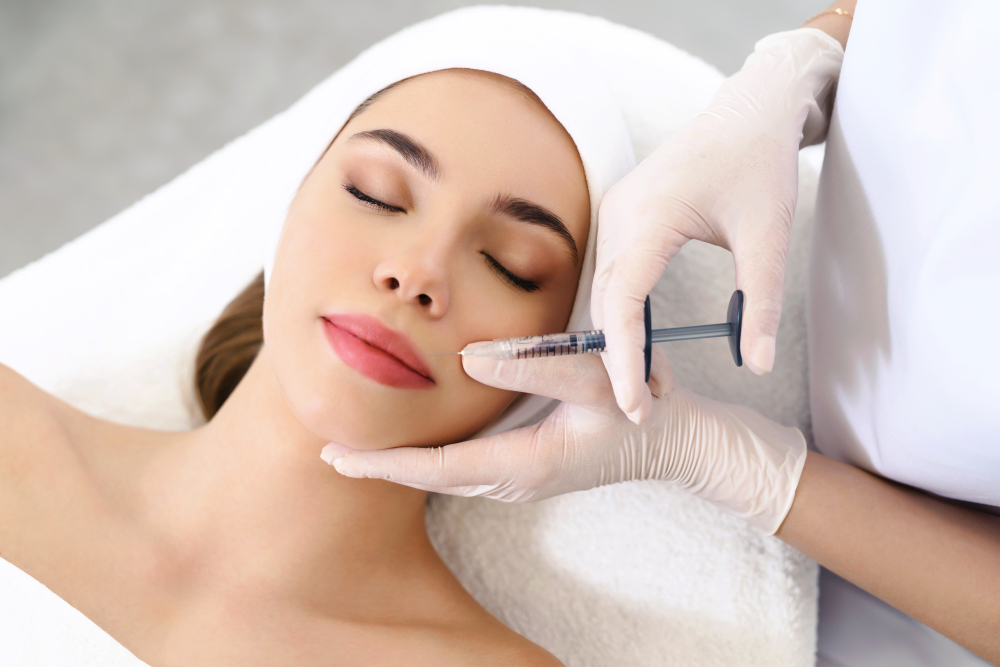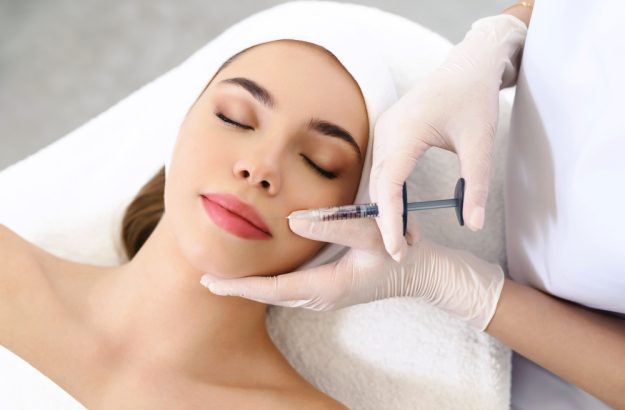
Botox and dermal fillers are among the most popular cosmetic treatments for their ability to correct wrinkles and volume loss and rejuvenate skin – without surgery, incisions, or downtime.
However, before undergoing injections, you likely have a number of questions about the process, including “What happens before, during, and after a Botox or filler treatment?”
Here’s what to know about injectables in order to properly prepare for the procedure and ensure optimal outcomes.
What to Know About Injectables – Before and During Treatment
Prior to undergoing an injectable treatment like dermal fillers or Botox, it’s important to avoid blood-thinning medications, such as aspirin and ibuprofen, and limit alcohol consumption.
Botox
During treatment with Botox or another neuromodulator, such as Dysport or Jeuveau, the product will be injected into targeted facial muscles.
This temporarily weakens underlying muscles and causes wrinkles and lines to relax for three-to-four months.
Dermal Fillers
During a dermal filler treatment, the selected injectable (i.e. Restylane, Juvederm, Radiesse, or Sculptra) is administered under the skin to soft tissue.
The product immediately plumps the area and restores volume for a more refreshed and youthful appearance.
Some fillers may also initiate an inflammatory response and stimulate collagen production for longer-lasting results.
Most patients find Botox and dermal injections to be a quick and relatively painless experience that may produce a slight pin-pricking sensation.
Both types of injectable treatments are performed in an office setting and typically take 15-30 minutes.
What to Know About Injectables – After Treatment
If you’re considering Botox and/or dermal fillers, here’s what to know about injectables after treatment.
Both treatment options require zero downtime, and patients are free to return to work and go about their day as they normally would.
However, certain precautions are recommended to limit possible bruising and swelling.
Botox
Following Botox or neurotoxin injections, patients should activate the treated muscles via facial expression for 90 minutes on and off.
It’s also important to remain upright and avoid exercise for approximately four hours post-treatment.
Dermal Fillers
Following dermal filler injections, ice can help minimize swelling, but you should not apply the ice pack for more than 10 minutes at a time.
Also, do not rub or massage the treated area or engage in strenuous exercise for 24 hours.
For at least 24 hours, you should forgo hats and headbands and take care not to massage the treated area.
Learn More About Injectables
If you are considering an injectable treatment, call our office today to schedule a comprehensive consultation with one of our highly skilled and experienced injectors.
